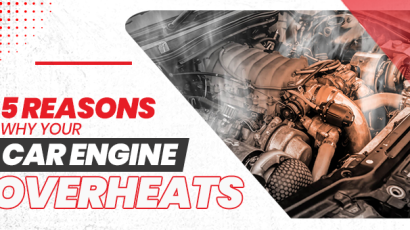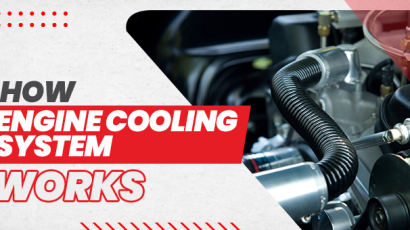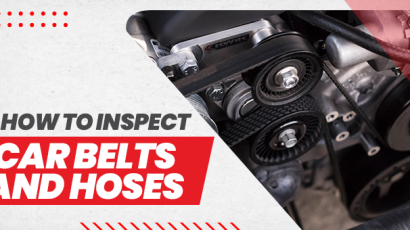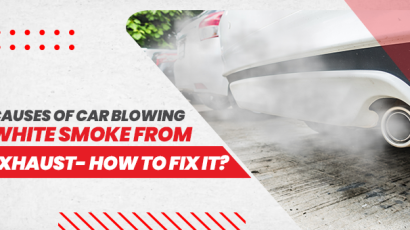
Your car’s cooling system plays a vital role in regulating engine temperature. Coolant, also known as antifreeze, circulates through this system, absorbing heat from the engine and releasing it through the radiator. However, a coolant leak disrupts this process, potentially leading to engine overheating and severe damage.
This comprehensive guide will equip you with the knowledge to identify a coolant leak, understand its causes, and take the necessary steps to address the issue. So, let’s begin.
Signs of a Coolant Leak: How to Spot the Trouble
A coolant leak can manifest in several ways. Here are the key signs to watch out for:
Puddles Under Your Car
A puddle of bright green, yellow, orange, or pink liquid beneath your parked car is a telltale sign of an engine coolant leak. Coolant comes in various colors, so the exact hue won’t necessarily pinpoint the source. However, its presence indicates a problem.
Overheating Engine
The primary function of coolant is to prevent overheating. If your engine temperature gauge climbs significantly higher than normal, particularly accompanied by a steaming radiator, a coolant leak could be the culprit.
Low Coolant Level
Your car’s coolant reservoir has a minimum and maximum fill level indicator. Therefore, regularly checking the coolant level ensures it remains within the recommended range. However, a consistently dropping level suggests a leak.
Sweet Smell
Coolant has a distinct, sweet odor. If you detect this smell emanating from your car, especially after driving, it might indicate a leak.
Visible Leaks
In some cases, you might be able to spot the leak visually. Look for coolant dripping from hoses, the radiator, the water pump, or around the engine block.
Why is My Car Leaking Coolant? Understanding the Causes
Coolant leaks can stem from various issues within your car’s cooling system. Here’s a deeper dive into what causes antifreeze to leak:
Deteriorated Hoses
Coolant hoses are the workhorses of the cooling system, constantly transferring hot coolant. They are typically constructed from rubber that naturally degrades over time due to heat exposure and engine vibrations. This degradation manifests as cracks, splits, or bulges in the hose. Additionally, the hose clamps that secure them to the radiator and other components can weaken, loosen, or corrode, allowing coolant to leak at the connection point.
Faulty Radiator
The radiator is the heart of the cooling system, responsible for radiating heat away from the engine coolant. However, leaks can develop in several areas of the radiator:
Core: The radiator core is a network of thin tubes that transfer heat from the coolant to the fins. Corrosion or physical damage from road debris like rocks or pebbles can puncture these tubes, causing leaks.
Fins: The radiator fins are thin metal plates that increase the surface area for better heat dissipation. These fins can become bent or damaged over time, potentially creating small gaps where coolant can seep out.
Tanks: The radiator is comprised of upper and lower tanks that house the coolant. These tanks are typically made of plastic or aluminum and can develop cracks or become brittle with age, leading to leaks.
Water Pump Failure
The water pump is essential for keeping coolant flowing through the engine. Because of a seal around the shaft, coolant cannot seep out of the pump housing. This seal can wear out due to normal wear and tear or excessive heat exposure, allowing coolant to escape. Additionally, the bearings within the water pump can fail, causing the shaft to wobble and damage the seal, leading to leaks.
Blown Head Gasket
The head gasket sits between the engine block and cylinder head, creating a watertight seal. It separates the coolant passages from the engine oil passages. A blown head gasket can occur due to overheating, improper maintenance, or using the wrong coolant type. Moreover, when the head gasket fails, coolant can leak externally or internally from the engine block, mixing with engine oil. If not resolved right away, this is a dangerous problem that might cause major engine damage.
Loose or Cracked Overflow Tank
The overflow tank serves as a surge reservoir for the coolant system. It stores excess coolant when the engine heats up, and the coolant expands. Cracks can develop in the plastic tank itself, especially due to age or extreme temperature fluctuations. Additionally, a faulty radiator cap that doesn’t seal properly can cause the overflow tank to leak or overflow.
All in all, by understanding the common causes of coolant leaks, you can be more vigilant in spotting the signs. Furthermore, you can take preventive measures to maintain a healthy cooling system for your car.
How To Prevent Coolant Leak
While some causes of coolant leaks are inevitable due to wear and tear, there are steps you can take to minimize the risk:
Regular Maintenance: To make sure that clamps and hoses are sturdy and free of cracks, schedule regular maintenance inspections. Additionally, the mechanic might look for indications of damage to the water pump and radiator.
Coolant Quality: Utilize premium coolant as advised by your vehicle’s manufacturer. This guarantees appropriate corrosion prevention and increases the lifespan of the cooling system components.
Temperature Monitoring: Be mindful of your engine’s temperature reading. If it begins to ascend excessively, proceed to stop and switch off the engine safely. When the automobile has cooled down fully, check the coolant level.
Avoid Overheating: Leaks might occur because the cooling system is overworked. Ascertain the appropriate operation of your car’s cooling system and take quick action to resolve any overheating issues.
How to Fix a Coolant Leak: DIY or Professional Help?
The method used to repair a coolant leak will depend on how bad the leak is, as well as the mechanic’s expertise.
Minor Leaks: For small leaks from hoses or the overflow tank, tightening clamps, replacing hoses, or refilling the tank with coolant might be sufficient temporary solutions. However, a permanent fix requires professional attention.
Major Leaks: Significant leaks from the radiator, water pump, or signs of a blown head gasket necessitate professional repairs. These components require specialized tools and knowledge to replace.
Important Note: Never attempt to open a hot radiator cap. Coolant under pressure can cause severe burns. Refilling or inspecting the coolant reservoir should never be done until the engine has completely cooled.
The Takeaway
In summary, if a coolant leak is ignored, it may result in serious engine damage and expensive repairs. Understanding the symptoms and causes of coolant leaks will enable you to act quickly to resolve the issue and prevent future problems. For minor leaks, topping off the coolant and tightening loose connections might offer a temporary reprieve. However, you must seek professional help for a permanent solution and to ensure the overall health of your car’s cooling system.
A skilled mechanic can identify the leak’s origin, suggest the necessary fixes, and guarantee that the cooling system in your automobile is operating at peak efficiency. The cooling system is crucial for keeping the engine healthy. Taking care of your car’s coolant system is an investment that will keep your engine running cool and extend the life of your vehicle.
If you’re in the market for a new car, consider exploring the Mercedes Benz price in Kenya. A luxury vehicle like a Mercedes-Benz not only offers exceptional performance but also comes with advanced cooling systems designed to keep your engine in top condition. Invest in a vehicle that matches your needs and ensures peace of mind on the road.











